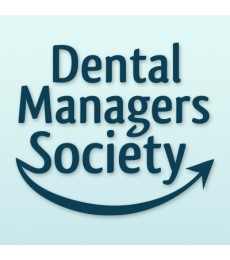Over the past several years, dentistry has experienced an amazing growth in technology and its use to improve practice productivity and patients’ experiences. From online bill paying and patient engagement programs to clinical use of intraoral scanners with 3D printing and CBCT scanners, technology has advanced the art and science of dentistry to new heights. As dental managers, you have many opportunities and tools available to make your work life easier and more productive. As a manager, there are mounds of data and information that you deal with on a daily basis. What if there were tools to assist you in gaining better patient case acceptance and improved third-party payor reimbursement? Enter the world of artificial intelligence or AI. AI has the ability to unlock untapped values and reduce inefficiencies. But what is AI?
Artificial intelligence was born during World War II with the mathematical works of Alan Turing, yet AI wasn’t developed fully until the early 2000s. In order for AI to work there needs to be algorithms or mathematical concepts, enough data to review and powerful computers that can understand the algorithms and data. Prior to the 2000s the algorithms were present but there wasn’t enough data or powerful enough computers to handle all of the information. Think how we have changed from our early use of the internet to the smart phones of today! Outside of dentistry, AI surrounds us in our everyday lives. If you order from Amazon and Amazon provides you with other items similar to what you ordered or binge on shows from Netflix or Hulu and they offer you suggestions for other binging options, that’s artificial intelligence at work. In dentistry, AI can improve the standard of care by providing clinical consistency, enhance patient communication and acceptance and improve insurance claim processing and management.
By acting as a “second opinion” to the clinical team, artificial intelligence can be used in radiographic analysis to recognize pathologies that the dentist or hygienist may not visualize. Clinical team members understand the nuances of radiographs, but being human, can sometimes miss subtle areas. AI is not infallible, it can highlight areas that the clinical team may consider irrelevant, but using both the clinical eye and the AI in combination can provide better treatment outcomes. Patients are looking to their clinical providers to be using the current state-of-the-art technology and often trust technology more than the person. Using AI for radiographic analysis uses technology to confirm for the patient what the hygienist or dentist has diagnosed and explained. AI integration with the practice management software (PMS) can also assist the clinical team in determining when patients are due for radiographs or provide information on other areas of diagnosed but unscheduled treatment to improve practice metrics.
When submitting for reimbursement to third-party payors, often there are obstacles that need to be overcome. Insurers require documentation upon documentation in order for reimbursement of various treatments. Radiographs are often requested and if they do not contain the exact requested information, claim delays or denials occur. Using artificial intelligence to quantify the treatment needed provides the insurer with accurate technology-driven information that cannot be denied.
AI can be a powerful tool to assist the manager and clinician in achieving the best for the patient and the practice. Understanding the benefits of using an artificial intelligence program to elevate the radiographic experience will be an amazing aid for both clinicians and managers.

Contact Info:
Ann-Marie DePalma
Pearl
Ann-Marie@hellopearl.com
Ann-Marie DePalma,
CDA, RDH, MEd, CDIPC, FADIA, FAADH


